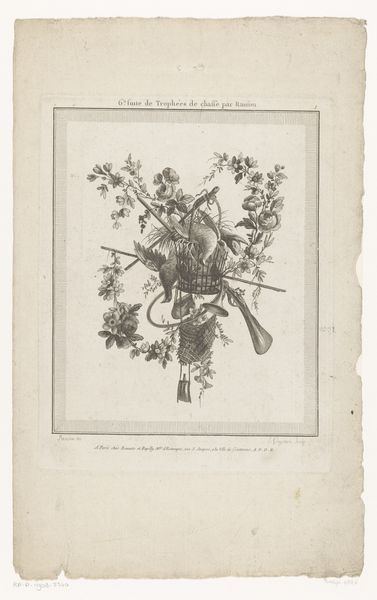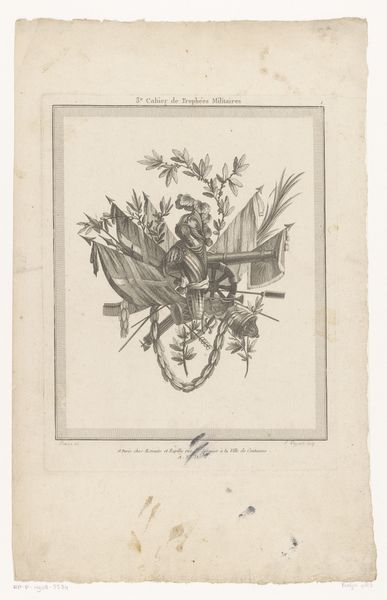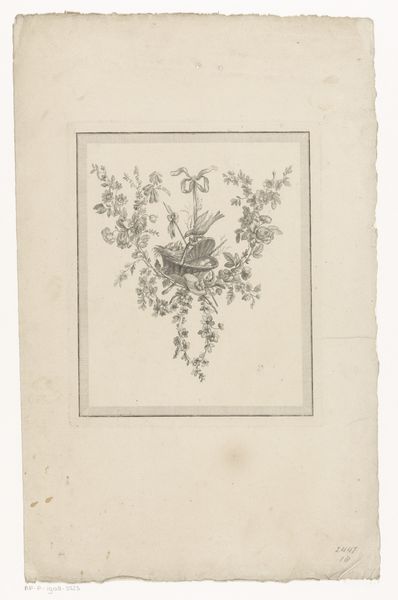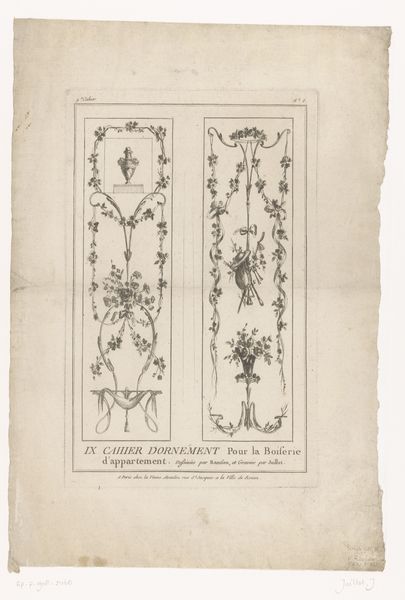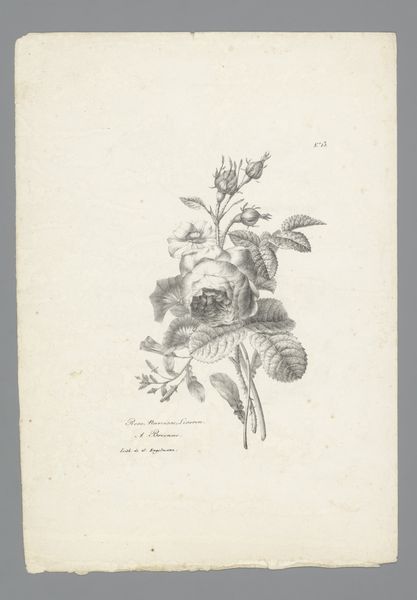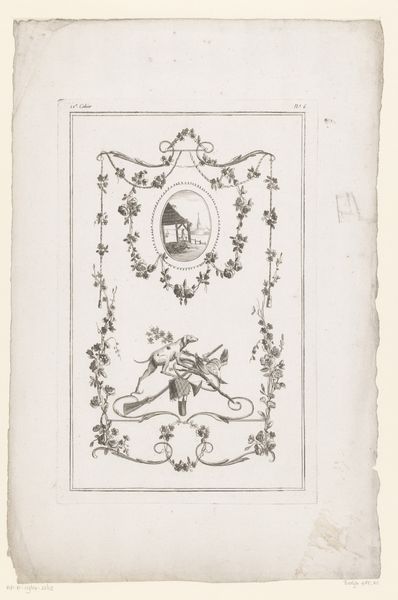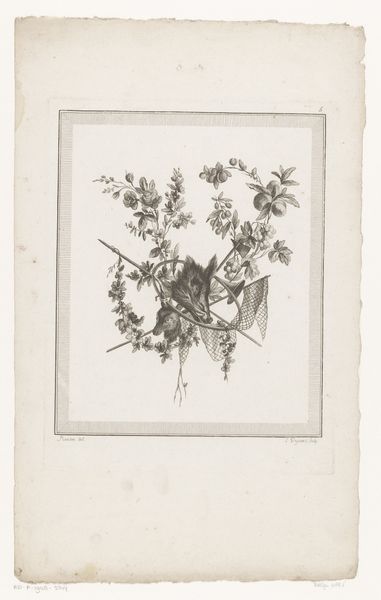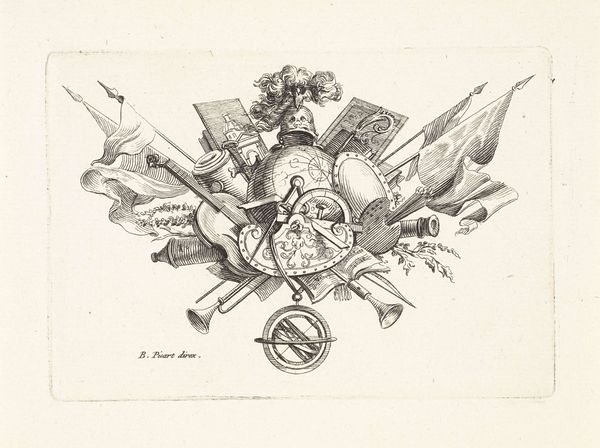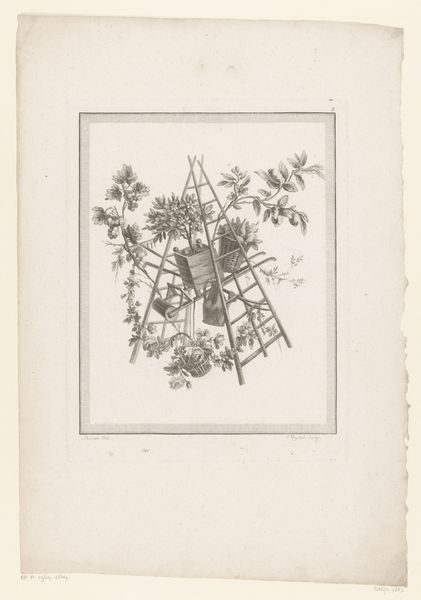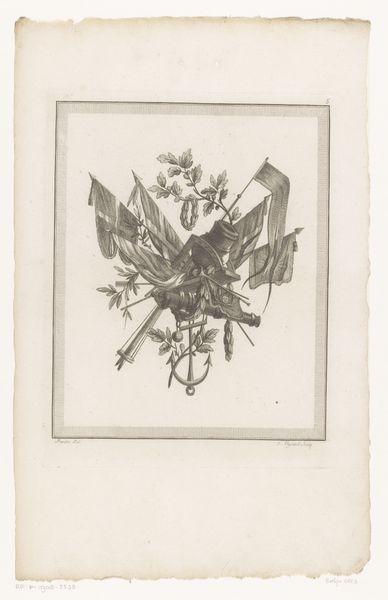
Dimensions: height 282 mm, width 220 mm
Copyright: Rijks Museum: Open Domain
Curator: Oh, my! What a curious, whimsical assemblage. It has such an oddly cheerful affect. Editor: Indeed! What we have here is "Trophy with Horticultural Attributes," a mixed-media print dating back to 1778, etched and engraved by Etienne Claude Voysard. It resides here at the Rijksmuseum. Curator: "Trophy" seems a rather...strong word for what looks like a gentle, almost playful arrangement of gardening tools. Why a "trophy," do you think? It reminds me of how during that period, elaborate displays and representations of the natural world were often markers of wealth and status, demonstrating control over nature. The elite often commissioned such displays. Editor: Precisely! This image is a perfect study of materiality and context. Observe how Voysard meticulously rendered the tools--the rake, the wheelbarrow, even the tiny ladder. These aren't merely representational; they speak volumes about the material processes, the labour involved in cultivating a garden. Curator: I can see how this "still life" romanticizes agrarian life but in a very constructed way. The items are suspended almost as if staged. Notice how gendered the tools feel... or rather, don’t. Absent is the evidence of labor-- no calloused hands, tilled earth, only objects posed formally amidst blossoms and ornament. Editor: Interesting point about the absence of direct labour in the imagery. To your prior point on wealth, though: the engraving technique itself adds another layer. The meticulous detail of the etching showcases the engraver's skill, making the print itself a commodity and statement of value through artistic means. Think about the socio-economic conditions required to have access to materials, time and mastery necessary for its creation. Curator: Right. By stripping bare the grit of labor from these domestic tools, Voysard speaks instead to how society values cultivation without really digging deep. The “trophy” signifies both mastery of the land and this sort of social artifice surrounding idealized country life, and its class-bound accessibility. Editor: Yes! And by recognizing how materiality meets those socioeconomic conditions, this beautiful yet oddly detached image resonates deeply. The art lies, therefore, in both the labor involved in depicting labour, and its accessibility in print form. Curator: A fascinating intersection, indeed! Now, to the next exhibit... Editor: Absolutely! There’s so much more to discuss along those lines...
Comments
No comments
Be the first to comment and join the conversation on the ultimate creative platform.
